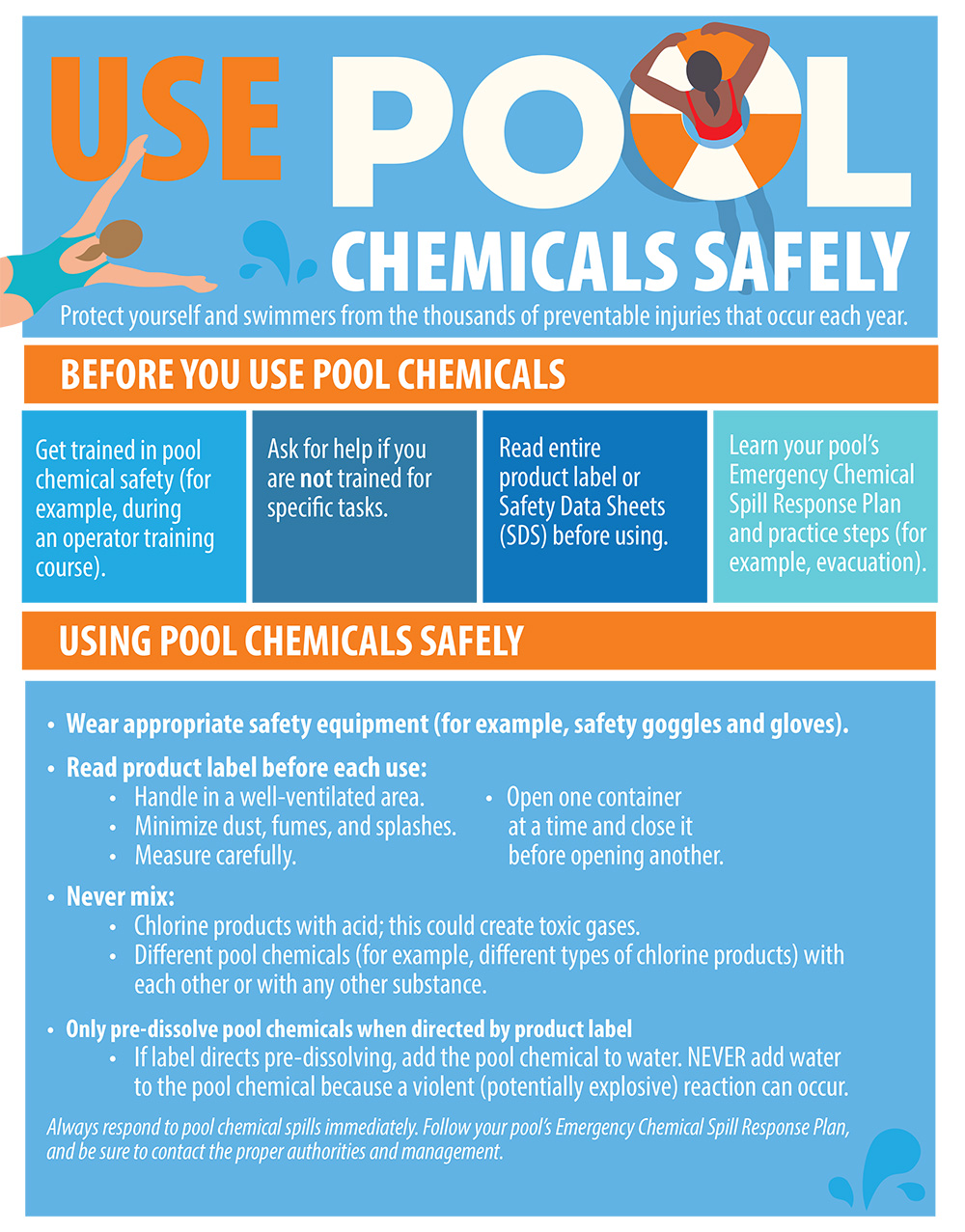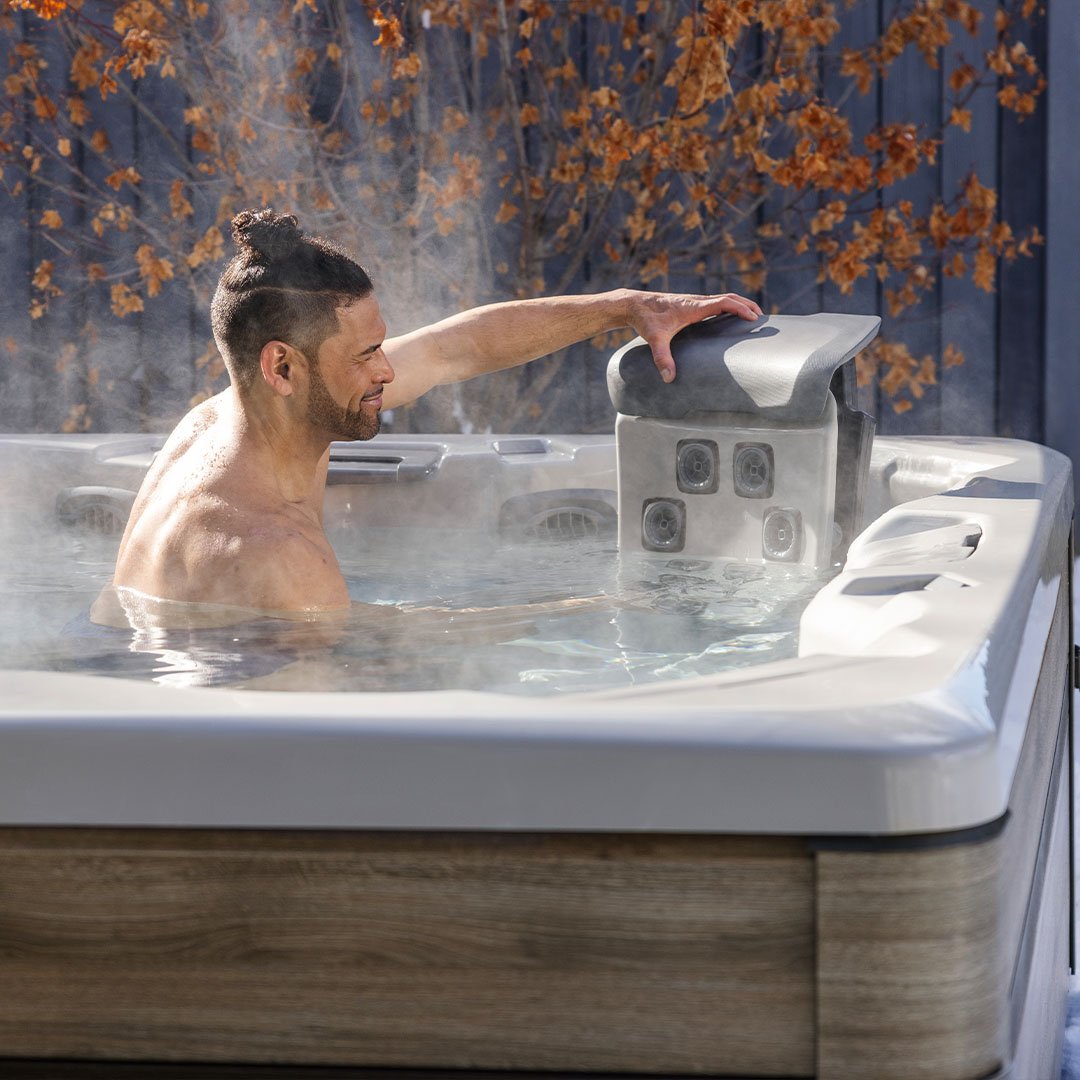Pool Water 101: A Complete Guide for New Pool Owners
Owning an above-ground pool is a delightful way to enjoy Life’s Best Moments with family and friends. But to ensure those moments are always joyful, understanding the basics of maintaining your pool water is essential. This comprehensive guide is designed to help new pool owners navigate the world of pool maintenance with ease, ensuring your above ground pool remains a haven of fun and relaxation.
Understanding Pool Chemistry
Balancing the pH and alkalinity in your above ground pool is crucial for maintaining crystal-clear water and ensuring a safe swimming environment. Imbalanced chemicals can lead to issues like algae growth, skin irritation, and cloudy water, which can spoil the fun. By mastering pool chemistry, you ensure your pool remains inviting and healthy for everyone.
Essential Chemicals Every Pool Owner Needs
Chlorine: The Keystone of Pool Sanitation
Chlorine is not just a pool cleaner; it's a vital agent for ensuring a safe and hygienic swimming environment. By effectively killing bacteria, viruses, and other pathogens, chlorine keeps water safe for swimmers. However, the effectiveness of chlorine is highly dependent on its concentration in the water. The ideal chlorine level for a swimming pool is typically between 1 and 3 parts per million (ppm). Below this range, chlorine cannot adequately sanitize the pool, and above it, swimmers may experience eye and skin irritation. Therefore, regular testing and adjustment of chlorine levels are crucial for maintaining the perfect balance that safeguards health without causing discomfort.
If you're interested in learning more about using liquid chlorine in your pool, check out our guide here. For insights into the differences between liquid chlorine, granular/powdered shock, and tablets, explore our detailed comparison guide.
pH Increasers and Reducers: Balancing the Water's Acidity
The pH level of your above ground pool water is a critical factor that influences both the effectiveness of chlorine and the overall health of the pool environment. A pH scale ranges from 0 to 14, with 7 being neutral. Pool water is ideally maintained slightly alkaline, between 7.2 and 7.6. If the water becomes too acidic (pH falls below 7.2), it can corrode metal equipment, cause chlorine to dissipate quickly, and irritate swimmers' skin and eyes. Conversely, if the water is too alkaline (pH rises above 7.6), it can lead to scale formation, cloudy water, and decreased chlorine efficiency. Using pH increasers (to raise pH) and reducers (to lower pH) helps maintain this delicate balance, ensuring optimal conditions for both pool components and swimmers.
Alkalinity Increasers: The pH Stabilizers
Total alkalinity acts as a buffer for pH, helping to stabilize it against sudden changes which can be caused by factors like rain, pool usage, and the addition of other chemicals. The recommended range for total alkalinity in pool water is between 80 and 120 ppm. Maintaining this range is essential for preventing the pH from fluctuating wildly, which not only keeps the water comfortable for swimmers but also ensures the effectiveness of chlorine and the longevity of pool surfaces and equipment. Alkalinity increasers are used to raise the total alkalinity level to within this optimal range, thereby securing a stable environment for maintaining the pool's pH balance.
Shock Treatments: Clarifying and Sanitizing
Shock treatments are a powerful tool in pool maintenance, designed to break down organic contaminants such as sweat, oils, and urine that regular chlorine levels cannot fully eliminate. These treatments also help in preventing algae blooms, a common challenge in pool management. Shocking the pool involves adding a large dose of chlorine (or a non-chlorine substitute) to the water, raising the chlorine level temporarily to a point where these contaminants are destroyed. This process helps to restore clarity to the water and enhance the sanitizing effectiveness of the regular chlorine regimen. It's recommended to perform shock treatments periodically, especially after heavy pool usage or severe weather conditions, to ensure the water remains crystal clear and hygienically safe.
Algaecides: Preventing Algae Before It Starts
Algae can be a persistent problem in pools, capable of turning the water green, creating slippery surfaces, and clogging filters. Algaecides serve as a preventive measure, targeting algae spores before they have the chance to grow and proliferate. While maintaining proper chlorine levels and pH balance is critical to preventing algae growth, algaecides add an extra layer of protection. These products work by inhibiting algae's ability to photosynthesize, effectively starving and killing it before it can become visible.
Step-by-Step Guide to Pool Chemical Maintenance
1. Testing Pool Water Regularly
The foundation of effective pool chemical maintenance is regular water testing. This essential practice allows you to monitor the levels of chlorine, pH, alkalinity, and other critical parameters in your pool. For new pool owners, investing in a reliable pool testing kit is a must. It's recommended to test your pool water at least once a week, but during peak swimming season or after heavy usage, increasing this frequency can help you catch and address issues promptly.
2. Adjusting Chlorine Levels
Chlorine is the primary sanitizer used in above ground pools to kill bacteria and other harmful pathogens. For above ground pools, maintaining chlorine levels between 1-3 parts per million (ppm) is ideal. If your testing reveals chlorine levels outside this range, adjust accordingly by adding chlorine to increase levels or using a chlorine neutralizer if levels are too high. Remember, the effectiveness of chlorine is closely tied to the pool's pH level, making it essential to manage both.
3. Balancing pH Levels
The pH level of your pool water affects everything from chlorine effectiveness to swimmer comfort. Ideal pH levels for a pool are between 7.2 and 7.6. Use pH increasers (soda ash) if the water is too acidic (low pH) or pH reducers (muriatic acid or sodium bisulfate) if the water is too alkaline (high pH). Adjusting pH levels not only maximizes the effectiveness of chlorine but also prevents corrosion of pool components and skin irritation.
4. Managing Alkalinity
Total alkalinity acts as a buffer for pH levels, helping to stabilize them and prevent rapid changes that could affect water quality and pool materials. The ideal range for total alkalinity in pool water is between 80-120 ppm. If alkalinity is too low, you can use an alkalinity increaser (sodium bicarbonate) to raise it. This step is crucial for maintaining a stable pH level and ensuring the longevity of your pool.
5. Shocking the Pool
Shocking your above ground pool on a regular basis is vital for breaking down organic contaminants and preventing chlorine lock, where the chlorine in the pool becomes ineffective due to a high level of chloramines. It’s advisable to shock the pool once a week or after heavy use, following the instructions on the shock product for the correct dosage. Shocking at night allows the chemicals to work without being affected by sunlight.
6. Preventing Algae with Algaecides
As part of your chemical maintenance routine, using algaecides can prevent algae from taking hold in your above ground pool. While shock treatments address existing algae, algaecides act as a preventive measure, keeping your pool water clear and free from algae blooms. Add algaecide according to the product directions, typically after you’ve completed the shock treatment and the chlorine levels have returned to the normal range.
Following this step-by-step guide to chemical maintenance will help ensure your above-ground pool remains a clean, safe, and inviting place for family and friends. Regularly testing your pool water, adjusting chemical levels as needed, and adhering to a maintenance schedule are key practices for any new pool owner.
Additional Tips for Maintaining Clear and Healthy Pool Water
Beyond the crucial steps of chemical balancing, the clarity and health of your pool water are significantly influenced by physical cleaning and filtration practices. Here's how you can ensure your pool remains a sparkling oasis for everyone to enjoy.
Skimming and Vacuuming
Regularly removing debris from the surface of your pool is essential for maintaining water clarity and preventing the filter system from becoming overloaded. Use a long-handled net skimmer to remove leaves, insects, and other floating debris at least once a day. Pool water clarity also benefits from vacuuming the bottom of the pool to remove dirt and debris that sinks to the floor. Vacuuming should be done weekly or more often if your pool is heavily used or located in an area prone to dirt and debris.
Maintaining the Pool Filtration System
The heart of keeping your pool clean and clear lies in its filtration system. Ensuring your pool filtration systems are running efficiently is key to circulating water and removing impurities. Clean or replace the filter cartridges as recommended by the manufacturer or whenever you notice a decrease in water flow rate. For sand and diatomaceous earth (DE) filters, backwashing is necessary to clear out accumulated debris and maintain optimal performance.
Adjusting Maintenance Practices for Weather Conditions
Weather conditions can have a significant impact on your pool's water quality. After heavy rain, for example, it's crucial to test and adjust chemical levels as rain can dilute chemicals and introduce contaminants. During hot, sunny days, chlorine levels can decrease more rapidly due to UV degradation, necessitating more frequent testing and adjustment. In cooler months, while pool usage may decrease, it's still important to maintain a regular maintenance schedule to prevent algae growth and water imbalance.
Regular Filter Checks and Cleaning
A clean filter is essential for maintaining water quality and clarity. Check your pool’s filter system regularly to ensure it's free from blockages and running efficiently. Depending on your type of filter, maintenance can involve rinsing cartridge filters, backwashing sand filters, or replenishing DE filters. Regular cleaning helps prevent mechanical issues and maintains the effectiveness of your filtration system.
Managing Pool Circulation
Proper water circulation is crucial to distribute chemicals evenly and prevent the formation of dead zones where algae and bacteria can thrive. Ensure your pool’s pump and filtration system are set to run for at least 8-12 hours a day to maintain optimal water quality. Additionally, periodically check and adjust the position of your return jets to optimize water movement and coverage.
By following these additional tips and integrating them with your chemical maintenance routine, you can ensure your pool remains a welcoming, crystal-clear haven for all your swimming activities. Regular cleaning, attentive filtration system maintenance, and adjustments for environmental factors play a crucial role in the overall health and clarity of your pool water.
.jpg?width=1000&height=650&name=Blog%20Images%20(3).jpg)
Common Mistakes to Avoid in Pool Maintenance
Navigating the responsibilities of pool ownership can be daunting for new pool owners. While it’s a learning process, being aware of and avoiding common pitfalls can save time, money, and ensure your pool remains a source of joy rather than frustration. Here are some critical mistakes to avoid:
Overuse or Underuse of Chemicals
Achieving the right pool chemical balance is crucial for maintaining a safe and clean swimming environment. Over-chlorinating your pool can lead to skin, eye, and respiratory irritation, as well as potential damage to pool surfaces and equipment. Conversely, insufficient chlorine levels make your pool a breeding ground for bacteria and algae, compromising swimmer health. Regular testing and precise adjustments are key to maintaining proper chemical levels. Additionally, if you're looking for guidance on how to choose the best automatic pool chlorinator to help maintain consistent chlorine levels, check out our comprehensive guide here.
Mixing Incompatible Chemicals
Safe chemical handling for pools is paramount. Mixing different chemicals or adding them to the water simultaneously can cause dangerous reactions, releasing harmful gases, or creating substances that can harm swimmers and damage the pool structure or systems. Always add chemicals separately and follow the manufacturer's instructions for safe handling and application.
Neglecting Regular Maintenance
A consistent pool maintenance schedule is essential for keeping your pool in top condition. Neglecting tasks like water testing, filtration, and cleaning can lead to water quality issues, equipment failures, and unsanitary swimming conditions. Regular maintenance not only extends the life of your pool but also ensures it remains a healthy and enjoyable place for everyone.
Failing to Adjust for Heavy Use or Weather Conditions
Pools that see a lot of activity or are subject to adverse weather conditions require more attentive care. After parties, heavy swimming days, or following a storm, additional maintenance steps such as shock treatments and water testing are necessary to restore and maintain water quality. Ignoring these adjustments can quickly lead to water imbalances and algae outbreaks.
Ignoring Pool Equipment Maintenance
Pool pumps, filters, and other mechanical systems play a crucial role in maintaining water clarity and hygiene. Failing to clean and service this equipment can lead to inefficient filtration, increased energy consumption, and costly repairs down the line. Regular checks and maintenance of pool equipment ensure optimal performance and prevent unexpected breakdowns.
By steering clear of these common mistakes, new pool owners can significantly enhance their pool experience, ensuring it remains a welcoming retreat for family and friends. Proper chemical management, regular maintenance, and attention to equipment care are pillars of a well-kept pool.
Proper Chemicals Safety
Ensuring the safety of your pool not only involves maintaining chemical balance but also handling pool chemicals responsibly. The Centers for Disease Control and Prevention (CDC) provides valuable insights into safely managing pool chemicals. They offer an informative infographic detailing best practices for handling, storing, and using pool chemicals.
By following these guidelines alongside our comprehensive pool maintenance tips, you'll create a safer and more enjoyable swimming environment for you and your loved ones.
FAQ's About Semi Inground Pools
How Often Should I Test My Pool Water?
Testing your pool water regularly is crucial for maintaining a safe and balanced swimming environment. For most pools, testing at least once a week is recommended. However, during peak swimming seasons, after heavy usage, or following significant rainfall, more frequent testing may be necessary. Testing allows you to monitor levels of chlorine, pH, alkalinity, and other important chemical parameters, enabling timely adjustments to maintain water quality.
What Is the Best Way to Add Chemicals to My Pool?
Adding chemicals to your pool requires care to ensure even distribution and effective water treatment. Always follow the manufacturer's instructions for each chemical. Generally, it's advised to dilute chemicals in a bucket of water (if the product instructions permit) and pour the solution around the pool's perimeter for even distribution. For granular products, broadcasting evenly across the surface while the pump is running helps to disperse the chemicals. Never mix chemicals together before adding them to the pool to avoid dangerous reactions.
Can I Over-Shock My Pool, and What Are the Consequences?
Over-shocking your pool can lead to several negative consequences. While shock treatments are necessary for breaking down organic contaminants and refreshing the water, too much chlorine can damage pool surfaces, cause wear on pool accessories, and lead to skin and eye irritation for swimmers. Over-shocking can also disrupt the balance of other chemicals, such as pH and alkalinity, making the pool environment less comfortable and potentially unsafe. It's important to use the correct amount of shock as directed by the product guidelines and to allow the chlorine levels to return to a safe range before swimming again.





.jpg?width=790&height=514&name=Blog%20Images%20(1).jpg)
.jpg?width=1000&height=650&name=Blog%20Images%20(2).jpg)






